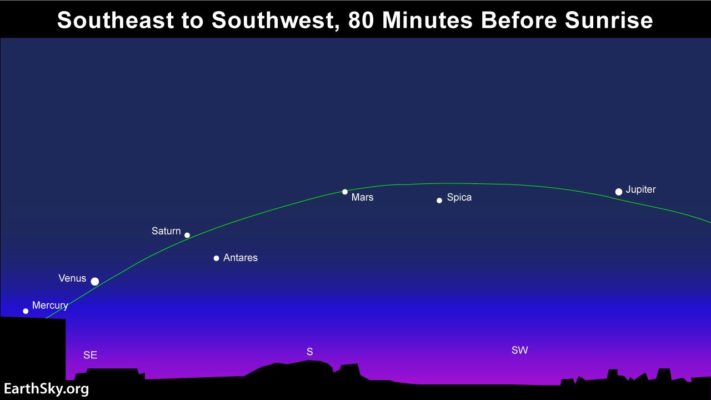My father prided himself on getting me and my two brothers interested in the world around us. I vividly recall a morning in 1957 when he woke us up at 4 AM and had us walk to the top of the hill in our neighborhood. Pointing at the sky and beaming with parental self-satisfaction, he said, “There is Sputnik 1.”
Sputnik (the word means fellow traveler) moved effortlessly across the sky—big and clear, and most definitely not an airplane. I was aware that I was witnessing something the ancient kings of Babylon never saw, a man-made object launched into space and making its circuit around Earth.
I was a science kid, a nerd before nerds had any cachet, but what I remember most about that day was my dad and how proud he was for being a good father.
This month, another sky show is unfolding. Until late February, the five brightest planets in the sky—Mercury, Venus, Mars, Saturn, and Jupiter—will ALL be visible in the early morning hours. The last time this happened was a decade ago.
How can you make the most of this real-time, astronomy lesson with your student? Follow these tips to get the best view:
- Go outside one to two hours before sunrise. As starlight fades, the five planets will come into view.
- While the planets will be visible to the naked eye, it couldn’t hurt to grab your binoculars or, if you have one, set up a telescope.
- Look to the east-south section of the sky.
- The brightest lights in that area will be the planets. Venus will be the brightest, and look white. Mars will be reddish. The others will be a little fainter, but if you have a particularly good pair of binoculars, you may see four small moons around Jupiter. A telescope will also come in handy to see the planets better. And, fortunately telescopes are much more accessible to kids and adults than they were in Galileo’s day.
It should look something like this:
And if you’re not an expert sky watcher or are concerned you won’t know what you’re looking at, you may want to install an app to help you identify the planets. I have an app, called Sky Guide, on my smartphone. All I have to do is hold my phone up to the section of sky I want to view, and the app identifies what I’m seeing. Other similar apps include The Night Sky, Sky View, and Star Walk.
This is a terrific educational opportunity you can enjoy with your kids. So, set the alarm and wake the kids for a wonderful, astronomical experience they (and you) won’t forget.






































